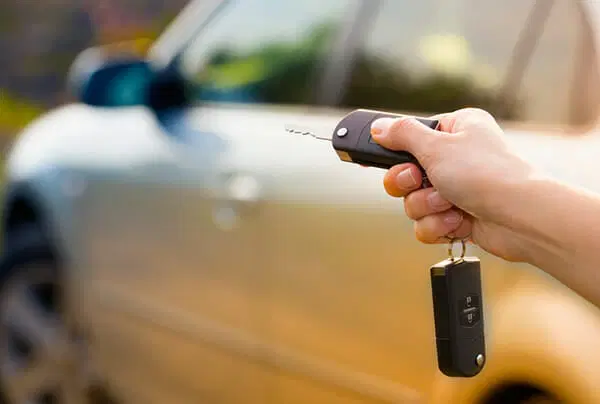
Losing your car key can be one of the most frustrating and stressful situations a driver can experience. Whether you’re running late for work, stranded in a parking lot, or locked out in an unfamiliar area, dealing with a lost auto key requires prompt and informed action. Fortunately, with today’s technology and services, replacing or reprogramming a lost car key is more manageable than ever—if you know the right steps to follow.
In this comprehensive guide, we’ll walk you through the process of what to do when you’ve got a lost auto key, including prevention tips and the best ways to get back on the road quickly and safely.
Step 1: Stay Calm and Double-Check Your Surroundings
Before jumping to conclusions, take a deep breath and thoroughly check your immediate area. Lost keys are often just misplaced—left in a jacket pocket, dropped under the car seat, or sitting on a nearby countertop.
Check:
-
Your bags and pockets
-
The ground around the car
-
Inside your car (if visible through the window)
-
Common areas like office desks, store counters, or restrooms
If you still can’t locate your lost auto key, move on to the next steps.
Step 2: Determine the Type of Key You’ve Lost
Modern vehicles use different types of keys, and the process to replace them varies accordingly. Identifying the kind of lost auto key will help you determine the cost, time, and service provider needed.
Common Types of Auto Keys:
-
Traditional Metal Keys – Basic keys without electronic components
-
Transponder Keys – Contain a chip that communicates with the vehicle
-
Remote Key Fobs – Allow remote locking/unlocking, sometimes include push-start
-
Smart Keys – Proximity-based keys for keyless entry and ignition
Knowing which type you lost will also help the locksmith or dealership provide the right replacement.
Step 3: Check for a Spare Key
Many vehicles come with at least one spare key. If you’re home or have someone who can bring it to you, this may solve the issue quickly.
If you don’t have a spare, now’s a good time to plan on getting one made along with your replacement key, to avoid similar situations in the future.
Step 4: Gather Important Vehicle Information
Before contacting any locksmith or dealership, collect essential information about your vehicle. This will streamline the process of creating or programming a new key.
Be prepared to provide:
-
Vehicle Identification Number (VIN) – Usually found on the dashboard or inside the driver’s side door
-
Year, Make, and Model of Your Vehicle
-
Proof of Ownership – Such as registration or title and a valid photo ID
Most professional services won’t make a replacement key unless you can verify ownership, for security purposes.
Step 5: Decide Between a Locksmith and the Dealership
When dealing with a lost auto key, you have two primary options: call a car dealership or a licensed automotive locksmith. Both have pros and cons depending on your situation.
Dealership:
-
Typically more expensive
-
May take longer (especially if they order parts)
-
Reliable for all vehicle types, especially high-end or newer models
Locksmith:
-
Usually more affordable and faster
-
Can come to your location
-
Skilled at replacing or reprogramming most key types
-
Available 24/7 in emergency situations
For many drivers, calling a certified mobile locksmith is the most practical and cost-effective solution when dealing with a lost auto key.
Step 6: Reprogram or Replace the Key
Once you’ve contacted a locksmith or dealership and they’ve verified your information, they’ll proceed with creating and, if necessary, programming a new key.
-
Traditional Keys: Usually cut on the spot without the need for programming
-
Transponder Keys: Need to be both cut and programmed to your vehicle’s ignition
-
Remote Fobs/Smart Keys: Must be synced with your car’s onboard computer system
This process can take anywhere from 20 minutes to a few hours, depending on the key type and technician’s tools.
Step 7: Secure Your Vehicle and Update Key Access
If your lost auto key was stolen or you believe it may have fallen into the wrong hands, you should take further steps to protect your vehicle.
-
Have the Locks Rekeyed or Ignition Replaced: Prevents the old key from being used
-
Erase the Lost Key from the Vehicle’s System: Applicable for transponder and smart keys
-
Reset Any Connected Apps or Access Settings: For cars with mobile app integration
These extra precautions are especially important if your key was lost with identifying documents or if you feel your vehicle’s security may be compromised.
Step 8: Make a Spare Key and Plan Ahead
Once you’ve resolved your lost auto key situation, consider it a lesson in preparedness.
-
Have at least one spare key made and store it in a secure but accessible location
-
Consider using a magnetic key box for emergencies
-
Use a Bluetooth key tracker on your keyring to prevent future loss
-
Program key replacement numbers or services into your phone for easy access
Final Thoughts
Losing your car key can be a major inconvenience, but it doesn’t have to be a crisis. With the right approach, resolving a lost auto key situation can be quick, secure, and affordable. Whether you turn to a dealership or a professional locksmith, acting fast and following the correct steps can save you time, money, and unnecessary stress.